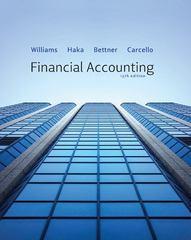Question
INSTRUCTIONS AND REFERENCES HERE: You will work with data relevant to the computation of the yield curve. The most relevant data sources here will likely
INSTRUCTIONS AND REFERENCES HERE:
You will work with data relevant to the computation of the yield curve. The most relevant data sources here will likely be:
- https://fred.stlouisfed.org/ (FRED: Federal Reserve Economic Data; you may be particularly interested in the series titled T10Y2Y, DGS10, DGS2, DGS1, DGS1MO).
- https://home.treasury.gov/policy-issues/financing-the-government/interest-rate-statistics?data=yield of particular interest is the Daily Treasury Par Yield Curve Rates, which "relates the par yield on a security to its time to maturity").
Please copy and paste the links into your browser to open.
-//-
Questions
1a) The most commonly used measure for the yield curve is the 10-2 Year Treasury Yield Spread. What was its value (in percent) on February 2, 2023?
b) Now, please compute the near-term spread between the 1-year and the 1-month Treasury Bills as of the same date, February 2, 2023; and compare it to the 10-2 Year Treasury Yield Spread you computed in the previous question.
Was the 10-2 Year Treasury Yield Spread higher or lower than the near-term spread between the 1-year and the 1-month Treasury Bills as of February 2, 2023?
Note: To answer this question correctly, please use the actual values you computed, including negative sign(s), if any. Please do not utilize just the absolute values of the two spreads. For example:
- A spread of -1% is lower than the spread of 0.5% (-1% < 0.5%).
- A spread of -2% is lower than the spread of 4% (-2% < 4%).
Please pick one of these answers:
- As of February 2, 2023, the 10-2 Year Treasury Yield Spread was HIGHER than the near-term spread between the 1-year and the 1-month Treasury Bills.
- As of February 2, 2023, the 10-2 Year Treasury Yield Spread was LOWER than the near-term spread between the 1-year and the 1-month Treasury Bills.
- As of February 2, 2023, the two spreads were the SAME.
Answer?
C) Using the yield data for May 7, 2007: Was the near-term spread (between 1-year and the 1-month Treasury Bills) indicating a recession through inversion?
answer Yes or No?
D) Using the yield data for May 7, 2007: Was the 10-2 Year Treasury Yield Spread indicating a recession through inversion?
answer yes or no?
Step by Step Solution
There are 3 Steps involved in it
Step: 1

Get Instant Access to Expert-Tailored Solutions
See step-by-step solutions with expert insights and AI powered tools for academic success
Step: 2

Step: 3

Ace Your Homework with AI
Get the answers you need in no time with our AI-driven, step-by-step assistance
Get Started


